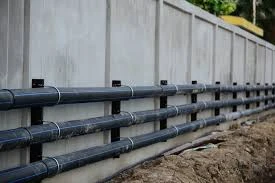nov . 23, 2024 23:52 Back to list
pvc ppr pipes and fittings
Understanding PVC and PPR Pipes and Fittings A Comprehensive Overview
When it comes to plumbing and construction, choosing the right materials is vital for ensuring the longevity and effectiveness of the systems in place. Among the myriad of options available, PVC (Polyvinyl Chloride) and PPR (Polypropylene Random Copolymer) pipes and fittings stand out due to their unique properties and applications. In this article, we will explore the characteristics, advantages, and common uses of these two popular types of piping materials.
PVC Pipes and Fittings
PVC is one of the most widely used plastic materials in the world, particularly for plumbing and drainage systems. PVC pipes are known for their durability, resistance to corrosion, and lightweight nature. They are manufactured through the polymerization of vinyl chloride monomer, resulting in a sturdy and versatile material.
Key Characteristics of PVC 1. Corrosion Resistance PVC does not corrode like metal pipes, making it ideal for transporting corrosive substances. 2. Lightweight and Easy to Handle The lightweight nature of PVC makes it easier to transport and install, reducing labor costs and time. 3. Low Maintenance PVC pipes require minimal maintenance compared to traditional materials, leading to long-term savings.
Common Applications - Water Supply Systems Due to its corrosion resistance, PVC is often used for cold water supply lines. - Drainage Systems PVC pipes are commonly found in drainage applications because they are capable of handling both high and low pressures. - Irrigation The agricultural sector frequently utilizes PVC pipes for irrigation systems, benefiting from their durability and resistance to chemicals.
pvc ppr pipes and fittings

PPR Pipes and Fittings
PPR is a relatively newer material that has gained popularity in plumbing applications over recent years. Composed of polypropylene, PPR pipes and fittings are highly resistant to high temperatures and pressures, making them suitable for hot water applications.
Key Characteristics of PPR 1. High Temperature Resistance PPR can withstand temperatures up to 95°C (203°F), making it an ideal choice for hot water systems. 2. Chemical Resistance PPR is resistant to a wide range of chemicals, enhancing its versatility in various applications. 3. Long Lifespan PPR pipes have excellent durability, with a lifespan that can exceed 50 years when properly installed and maintained.
Common Applications - Hot and Cold Water Supply Systems PPR is widely used in residential and commercial buildings for both hot and cold water distribution. - Heating Systems Its high-temperature resistance makes PPR ideal for underfloor heating and radiator applications. - Industrial Uses PPR pipes are also utilized in industrial settings, notably in the chemical and food processing industries due to their resistance to corrosion and chemicals.
Conclusion
Both PVC and PPR pipes and fittings offer unique advantages that cater to different plumbing and construction needs. While PVC is an excellent choice for drainage and cold-water systems, PPR excels in applications involving hot water and high-pressure scenarios. Understanding the specific requirements of a project can help in selecting the right type of piping material, ensuring not only compliance with regulations but also the efficiency and durability of the plumbing system. As both materials continue to evolve, they remain indispensable in modern plumbing, sustainable development, and environmental conservation.
-
Durable PP Rigid Sheet: Lightweight, Chemical Resistant Solutions
NewsAug.21,2025
-
PVC Grey Sheet for Extraction: Chemical Resistant & Durable
NewsAug.19,2025
-
Durable PVC Pipe Fittings for Plumbing & Irrigation Needs
NewsAug.18,2025
-
HDPE Steel Belt Reinforced Spiral Corrugated Pipe | High Strength
NewsAug.17,2025
-
HDPE Pipe Fittings: Durable, Leak-Proof Solutions
NewsAug.16,2025
-
Premium CPVC Sheet: High-Temp & Chemical Resistant Solutions
NewsAug.15,2025

